Seeing Cuba Through Basketball
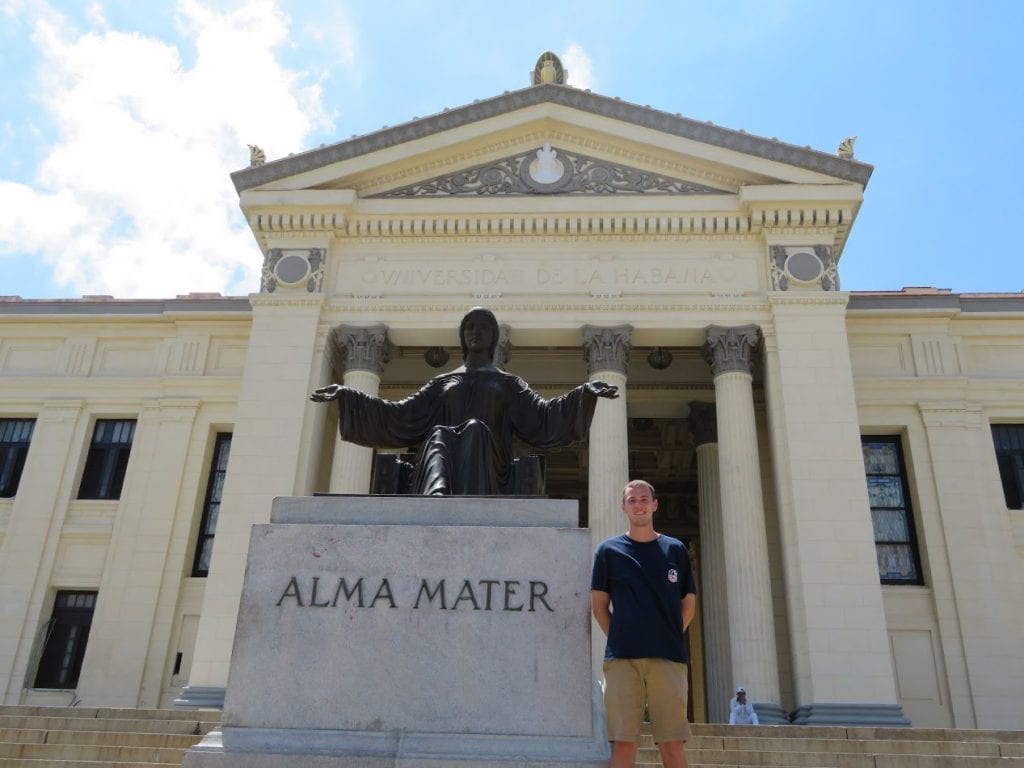
A first-hand view of Cuba from the only foreigner to play in their college championships
By Scott Csaplar with Dick Csaplar*
HAVANA TIMES – Fifteen international players from 11 countries participated in last season’s Final Four. None were from Cuba. There was one American who played in the Cuban equivalent of their NCAA Tournament. That would be me, the guy nervously standing at attention for the Cuban national anthem in front of thousands of spectators and millions on national television. This is how I got there.
The spring of 2017 I got the chance to study abroad at the University of Havana at an exchange program managed by Butler University. It was my junior year at Gettysburg College and, as a Political Science major I jumped at the chance to study in a country so close but so different.
Students at the University of Havana (UH) take 4 classes a semester but there the similarities with a US education end. Professors show up and lecture for an hour – no overheads, few handouts, little homework and only a final paper to determine your semester grade, where most exchange students receive about the same score. Therefore, I had a lot of time to do other things, which for me as a former high school captain meant playing basketball.
UH has no dorms so all students must find housing with local families. I started playing Cuban basketball on a couple of open courts near my host family’s home. There are only few courts in the city and it took some time to find one nearby. This particular court was built by NBA Cares and their logo was on all the backboards. Every evening around 5:00 o’clock players of all ages and abilities started to show up. Many times, mine was the only basketball and when I had to go home for dinner the games ended.
Games were 3 on 3 where players called fouls on each other, rather than on themselves which led to endless arguments. Many occasions there was more time spent arguing calls with arms waving than actually playing – I even saw players walk of the court in disgust mid-game. Fairness is a large part of the Cuban mindset and it came out in spades on the court.
The basketball gear was interesting. While everyone had shorts and jerseys (tank tops are the casual shirt of choice) basketball shoes varied greatly. Some players played barefoot, some had what looked more like bedroom slippers and a few had legitimate basketball shoes, most likely brought in by relatives from Miami. Both Nike and adidas had company stores in Havana but the Cubans called them “Basketball Museums” because people only went in to look as the prices were way beyond local affordability.
There were a few NBA jerseys (Rudy Fernandez being the most popular) but many were clearly outgrown years ago and washed almost to point that you couldn’t see the number, team or sometimes, even the original color. Jerseys are highly prized as these are quintessential American products and not available due to the US embargo.
While playing, I met Kacho. When he learned that I was enrolled in the Philosophy Department (which includes my class on Marxism and Leninism) he invited me to play on a club team. Other departments in the school such as the mathematics had a team and played in an intramurals type event. During the tournament, I was approached by the coach of the UH team and invited to try out for the varsity.
University of Havana Team
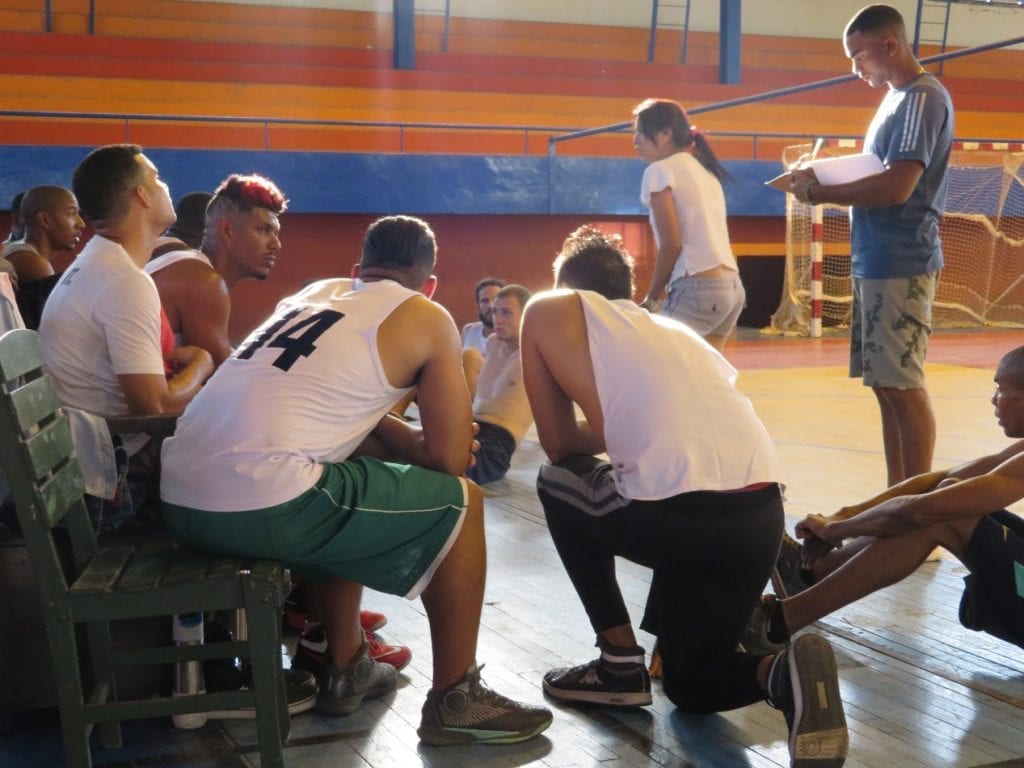 My coach was a young woman in her late 20s, a physical education professor named Mariana who had acquired a love of basketball from her father. I didn’t expect her to be the coach, but when I saw and heard her on the court, and saw the way the players respected her, I knew she was qualified. One of the changes in Cuba is women climbing higher into the ranks of employment and my coach “Profess” was a great example.
My coach was a young woman in her late 20s, a physical education professor named Mariana who had acquired a love of basketball from her father. I didn’t expect her to be the coach, but when I saw and heard her on the court, and saw the way the players respected her, I knew she was qualified. One of the changes in Cuba is women climbing higher into the ranks of employment and my coach “Profess” was a great example.
The gym was located in the back of the University campus. The first thing you see in the gym is a massive photo of Fidel Castro playing basketball when he was in college. “El Commandante” was rocking the short shorts well before Larry Bird, and basketball was said to be his best sport. The gym itself looked as old as Fidel; loose floorboards that killed a dribble instantly, old concrete bleachers covered in dust and cigarette butts, lights that just eerily illuminated the court and a patchy aluminum roof with birds nesting and sometimes defecating on the court below.
A lack of equipment was very apparent. Due to the embargo, sports equipment is hard to acquire and expensive, so much so that during baseball games, fans are required to retrieve foul balls so play can resume. Players were sliding all over the court, the few balls had either too much or not enough air and occasionally the lights wouldn’t work, signaling the end of practice. The water fountains didn’t work so we filled up our water bottles using a shower without a head.
We practiced every weekday at 7 PM. Oftentimes I was the first to show up due to what we called “Cuban time”. The Cuban transportation system is, like many other industries in Cuba, old and outdated, which meant that players who lived outside of the city were often late to practice. Once we lost the keys to the gym and couldn’t practice for a week.
Rich American
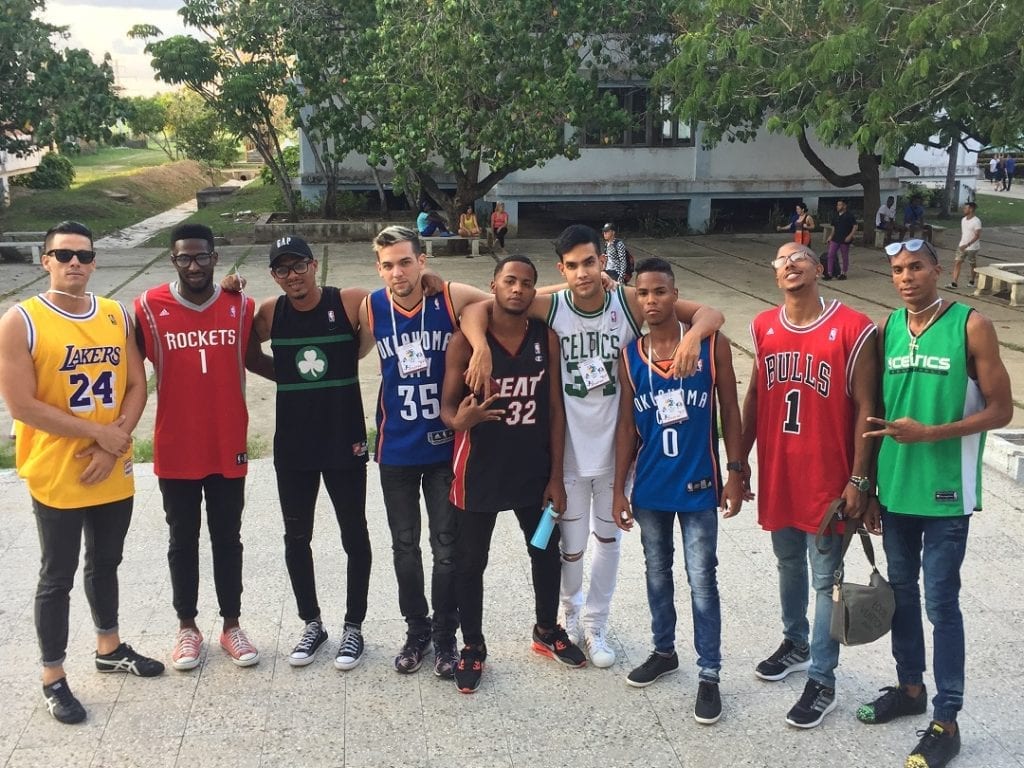
Before leaving the US I vowed that I would live as a Cuban, hoping to be accepted as “one of them”. This was impossible, not just because of their stereotype of “rich Americans” but because we really are so much richer in terms of material possessions. Every time I walked onto a court with new players I could see everyone looking at my shoes.
I had only brought an older pair of Nike Hyperdunks from my High School team with me not knowing how much basketball I would be playing, so I asked my brother to buy me a new pair and bring them down on a visit. The day I took them out of the bag my UH teammates stood around going “OHHHH” with several immediately asking to buy them when I left. I did give my old pair away.
One of my father’s favorite things to do is to visit Goodwill and find used NBA jerseys, usually costing about $5.00. He has found dozens so I brought about 20 of them with me to both wear and share. One of my favorite basketball times was giving each of my UH teammates a new (by Cuban standards) NBA jersey – most had never had one before. It was like a feeding frenzy. They agreed to wear the NBA jerseys to the college championships to show off.
Even the coach was not above taking advantage of her American. She regularly hit me up to transfer minutes from my phone to hers. The exchange program issued us old-fashioned flip phones as those were the most advanced that could be supported on Cuba’s mobile network. These required prepaid minutes which could be purchased on time cards at a government center called an ETECSA. My father could add value to my phone on the Web (Ding) without me having to wait in a line for hours. Cubans had a practice of taking your phone and pressing a code to see how much value was stored. They were constantly surprised to see me with $10 – $15 in saved value. They were also not afraid to ask me to transfer some of that value to their number.
Tournament
 University teams from all over Cuba travel to play a tournament each school year in Camagüey, a mid-sized city in the center of the island. Seven schools had basketball teams and they were divided into 3 classes with three, including UH, Camagüey and Pinar del Río and Santiago in the highest bracket.
University teams from all over Cuba travel to play a tournament each school year in Camagüey, a mid-sized city in the center of the island. Seven schools had basketball teams and they were divided into 3 classes with three, including UH, Camagüey and Pinar del Río and Santiago in the highest bracket.
All the UH sports teams traveled the eight hour drive in a single, slow moving bus. The basketball team was joined by gymnastics, karate, and the one member of the chess team. There is no baseball team at UH primarily because there is no room for a baseball field. In fact there were few fields in Havana as it is a pretty crowded place. Baseball players tend to come from the more rural areas of the island.
Over the 5-day tournament we lived in the U of Camagüey dorms – 5 sets of bunk beds about 15 inches apart in each room with writings and old pictures of Jessica Lopez and Justin Timberlake on the wall. We ate in the school cafeteria together; typical Cuban fare – chicken or pork (Fidel decided that Cuba would be a dairy nation so there is a long prison sentence for anyone killing a cow without a permit) as well as black beans and rice. We slept on a sheet of plywood with a thin mattress pad. There were no sheets, towels, blankets or pillows, and I didn’t know to bring any. My teammates laughed themselves into tears when they saw me sleeping on a bare mattress pad using folded up shirts for my pillow. When I said I thought they would be provided, they laughed and said, “Dude, this is Cuba”. In the common Cuban manner of sharing however, one of my teammates gave me his sheet to use so I wasn’t sleeping on the old scratchy mattress pad that was older than me.
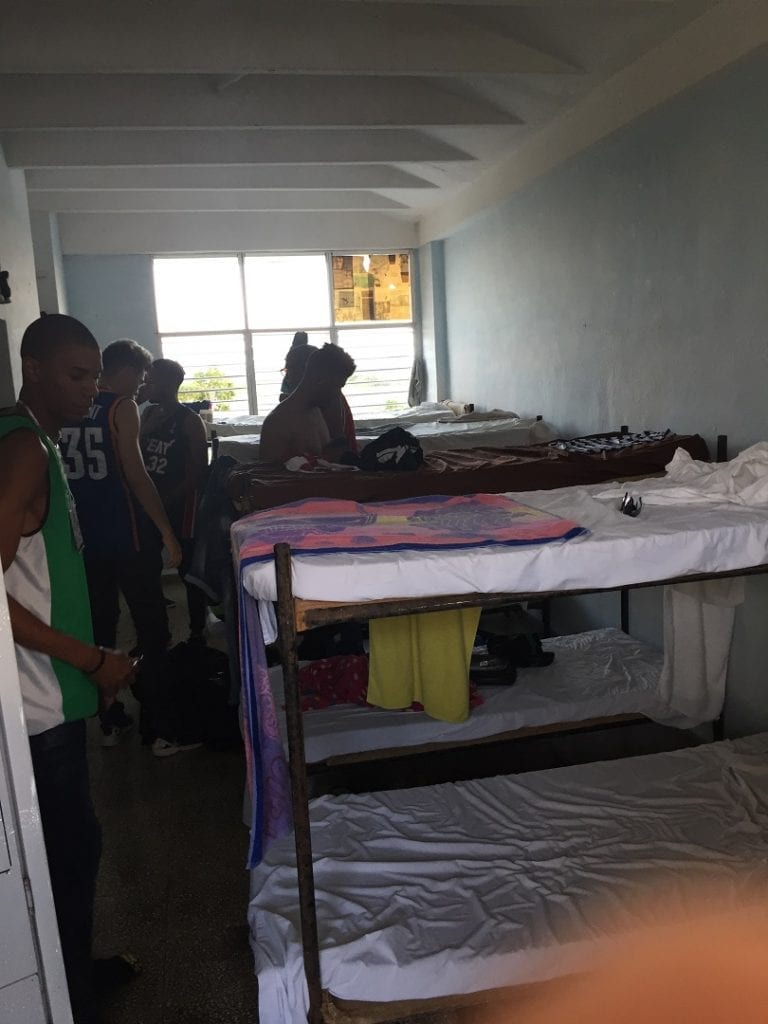
The opening ceremonies were widely attended by about 2000 locals and broadcast by Cuban national television. There were 610 athletes taking part (I was the only foreigner) and we all stood in the entry way while exhortations were proclaimed over the loud speakers – “VIVA La Revolucion…VIVA Fidel….VIVA Raul”. We entered the arena following the UH flag, with fog machines and purple lights for effect. It was clearly a very proud moment for all the athletes to represent their school. Cuba has a mandatory military service; a few soldiers carried in the national flag and everyone stood straight as an arrow with their hands at their sides. Everyone, and I mean everyone, sang the anthem, and loudly.
You can only imagine how far I was out of my comfort zone. I don’t know if the people in the stands knew that UH had an American player. I just knew that I stood out, and that the fans and athletes were staring at me. I was the only person wearing Nike LeBrons and mid-calf socks. During the national anthem I saw players from other teams looking at me to see how I would act; I am sure they thought “What are you doing here?”

UH and Camagüey were the first games after the opening ceremony. The play quality was between a good US high school and a Division 3 College. It was clear that there is little formal basketball coaching available. While there were some real A-T-H-L-E-T-E-S there was little in the way of advanced play such as pick and rolls, positioning for rebounds, or any real effort to play defense. When a shot went up every pair of eyes (including the refs) looked up to follow the flight of the ball.
You would assume that UH had the best athletes as that is the largest city, but that is wrong. Camagüey won it all. During our game there was a hard foul that led to some heated words but nowhere near a fight. Cubans don’t play basketball with the same intensity (anger?) as Americans. They hugged it out.
After the game – which wasn’t even really close -Camagüey players worked hard to console us on the loss. I wasn’t sure if this was part of the Cuban psyche or just the fact that we had to share a very small bus back to the dorms. In any case it was one of the most awkward bus rides I have ever taken.
Conclusion
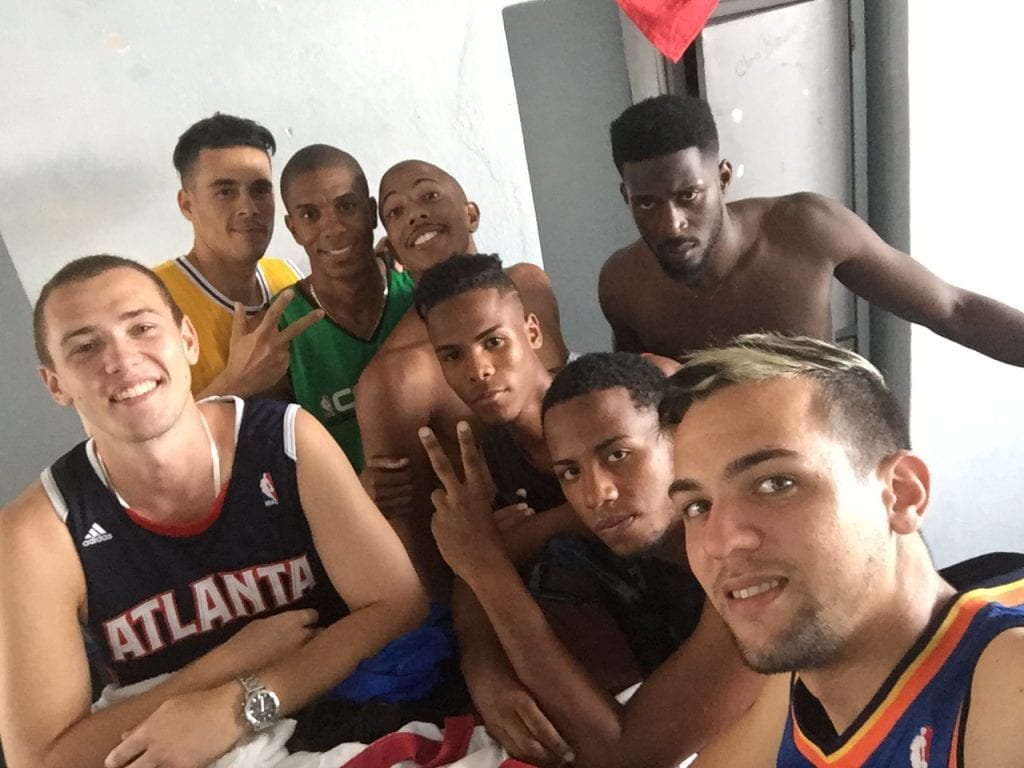
Cuba has a history of basketball – the only Olympic medal ever won by a Caribbean nation was a Bronze won by Cuba in 1972, the year the Soviets beat the US for the gold. The US embargo is clearly having an impact on the growth of basketball in Cuba. Embargos are blunt instruments that have many unintended consequences.
While our embargo may be targeting the military and secret police (something I absolutely did not see any evidence of as I was completely free to roam and talk with anyone about anything) they do affect people just wanting to live their lives. My friends want to buy basketball shoes, watch NBA games on TV, follow their favorite players, and learn the finer points of the game. Basketball is part of America’s “soft power” and has great influence in winning the hearts and minds of Cuban youth. If we want our foreign policy to focus on the next generation and not the last, we need to lift the embargo and let the attraction of basketball work its magic.
*http://cubanbasketball.blogspot.com/2017/10/cuban-basketball.html
Click on the thumbnails below to view all the photos in this gallery. On your PC or laptop, you can use the directional arrows on the keyboard to move within the gallery. On cell phones use the keys on the screen.











Eli Quintana Former Harlem Globetrotter. I was born in cuba and left in 1980 to the usa. I would love to run a basketball camp in cuba.
Hi Scott
I enjoyed this story as it does show what Cubans must overcome to make playing basketball a reality. The Cubans continue to overcome hardships; not just in basketball but in all aspects of Cuban life and the greater our understanding is, the more compassionate we become.
I am leading a university basketball team to explore Havana and it would be wonderful to include some time with local basketball players. Let me know if you have any contacts. Viva Cuba!
I enjoyed reading Scott’s post. I think he has drank a little too much of the Castros kool-aid when he blames the US embargo for so much of what he saw lacking in Cuba. Russia and China are basketball powerhouses. Both countries are also leading trade partners with Cuba. The embargo is NOT the primary reason Cuba lacks basketball supplies. Both Chinese and Russian companies are perfectly capable of selling or donating shoes, balls, jerseys, etc. to their Cuban comrades. Cuba is poor because Castro-style socialism has failed. Convincing the Yuma Scott that all is to be blamed on the embargo is classic Cuban propaganda.
An interesting article by Scott Csaplar, with open frank comment. As a basketball enthusiast he understandably promotes his game. But as he explained it is difficult for Cubans to find facilities and equipment. Watching kids playing on the street is instructive. Soccer and baseball are the norm, with the former slowly but steadily taking over from the latter. TV has its influence and although the national baseball league gets a lot of time, it is soccer from La LIga in Spain, the Bundesliga in Germany and to a lesser extent, the English Premier League which attract most viewers. Kids tend to worship Messi and Ronaldo as their sporting heroes.
Looking at Scott’s photographs, I wonder if he believes the Government claim that only 9.9% of Cubans are black?